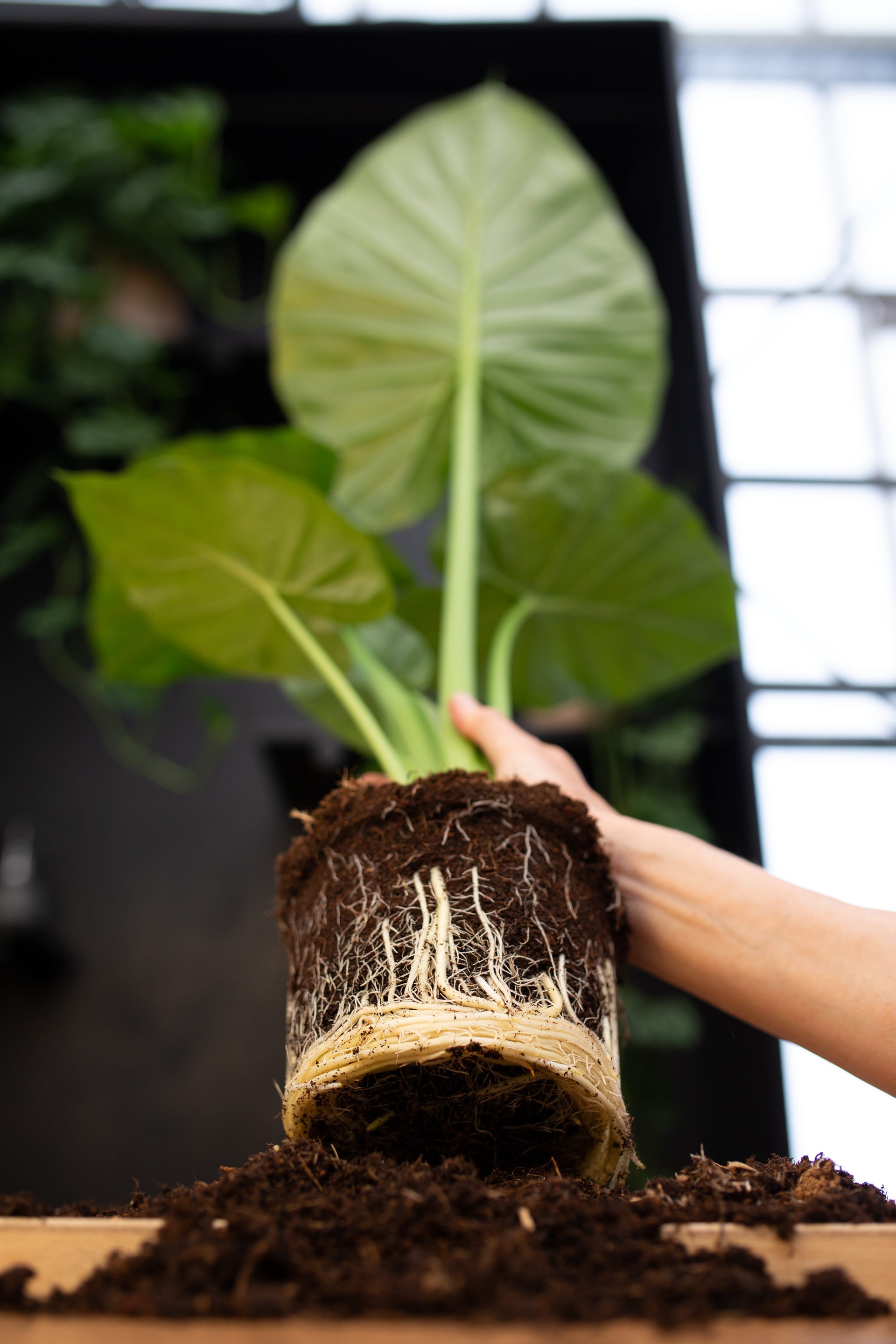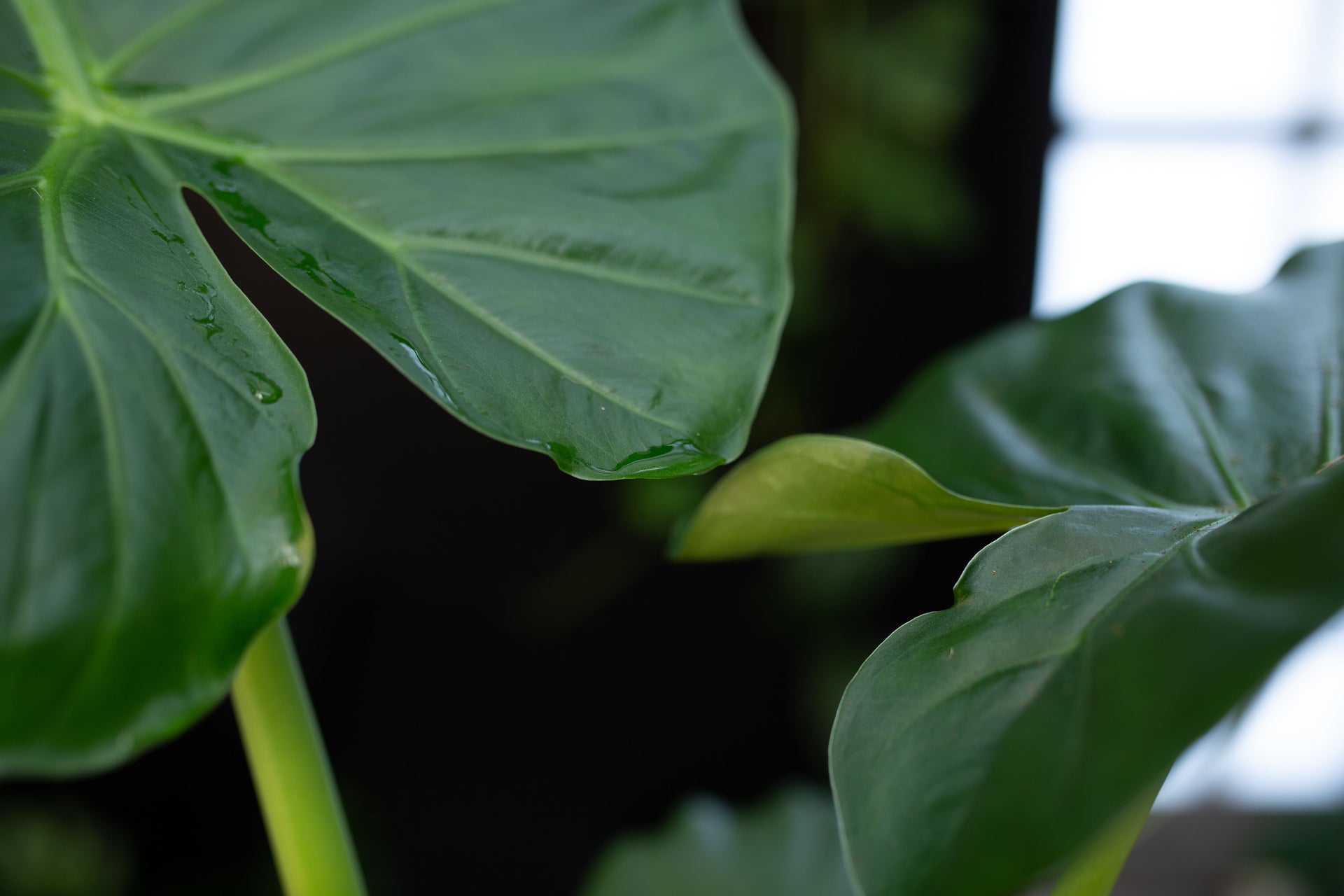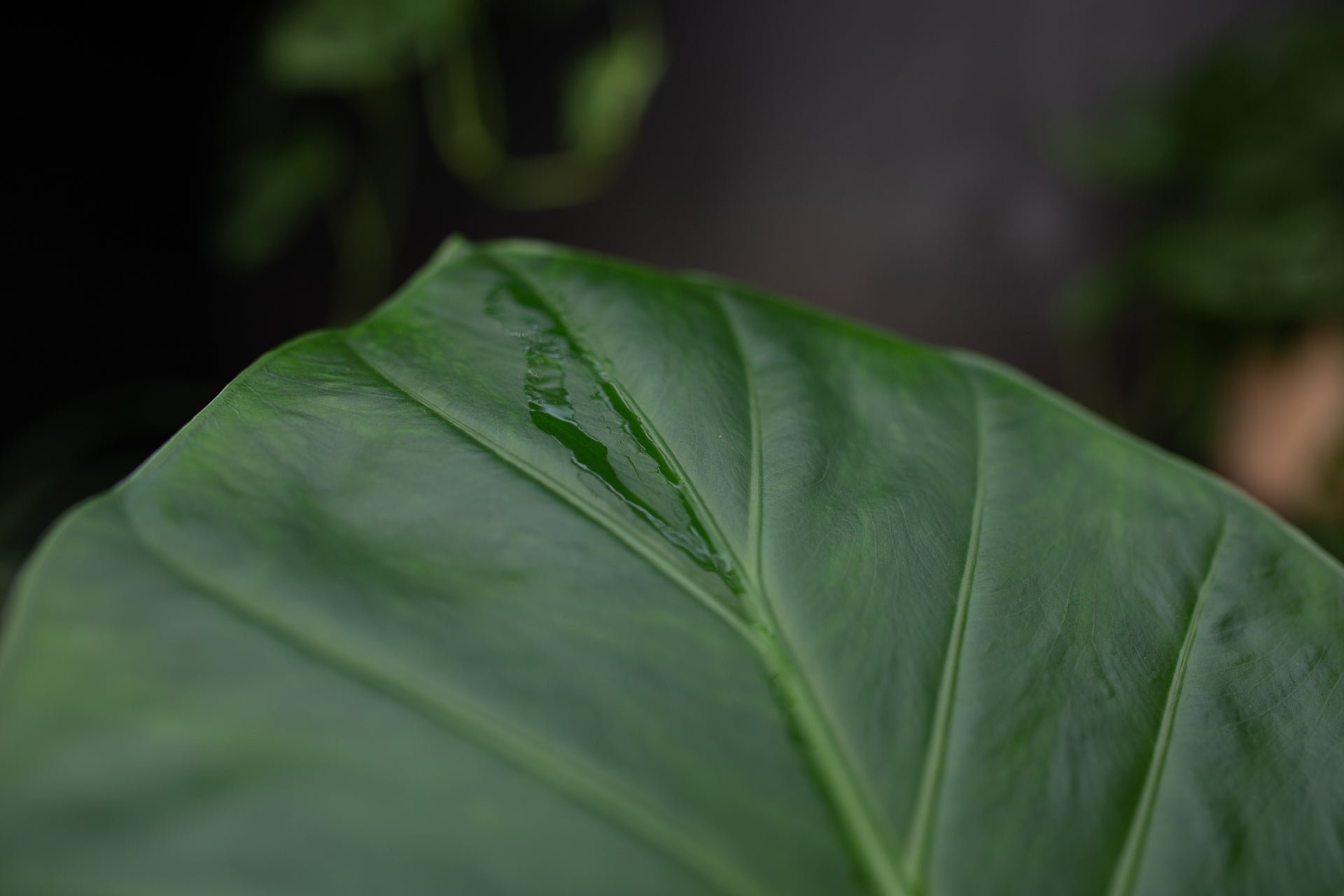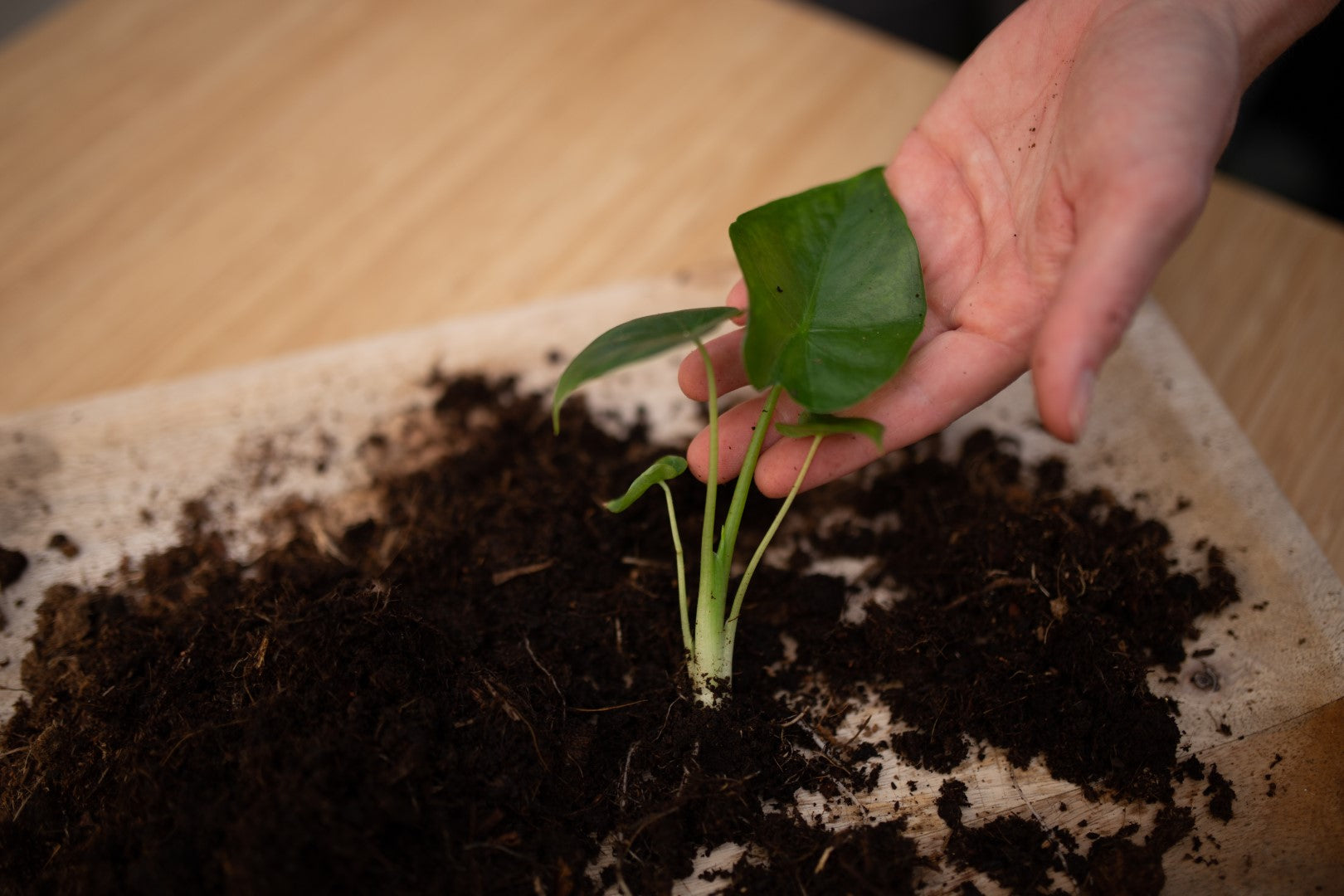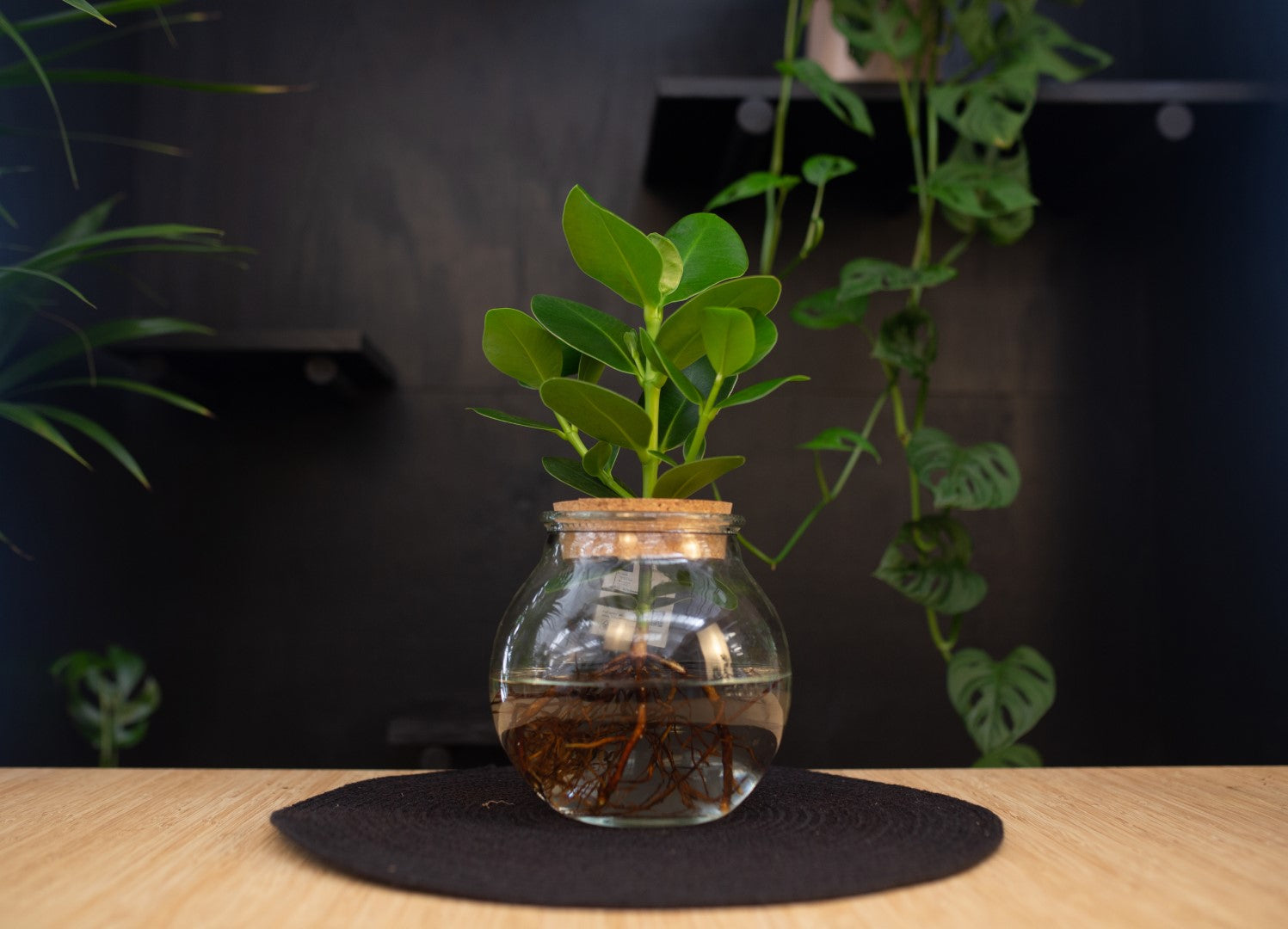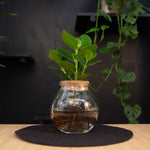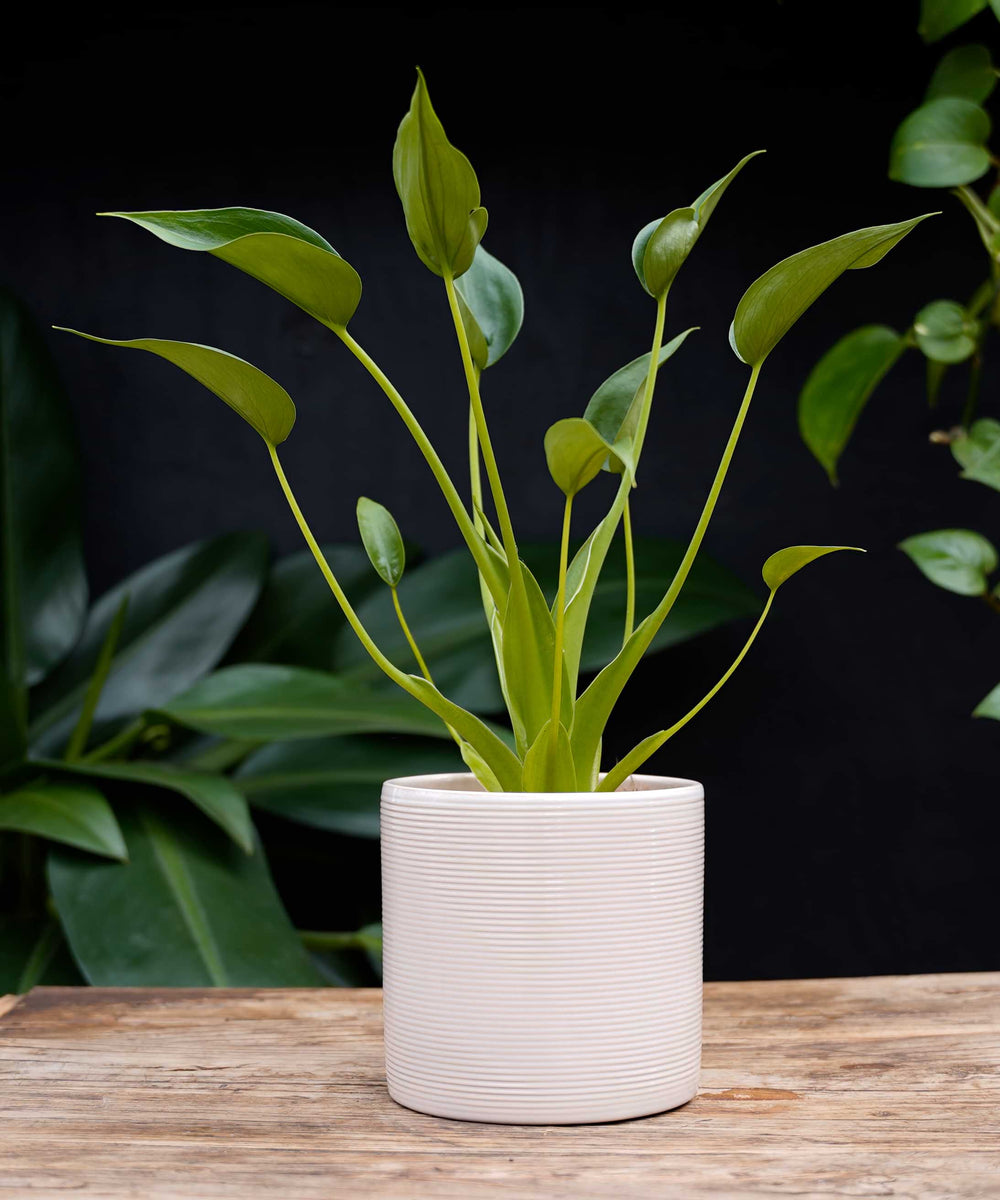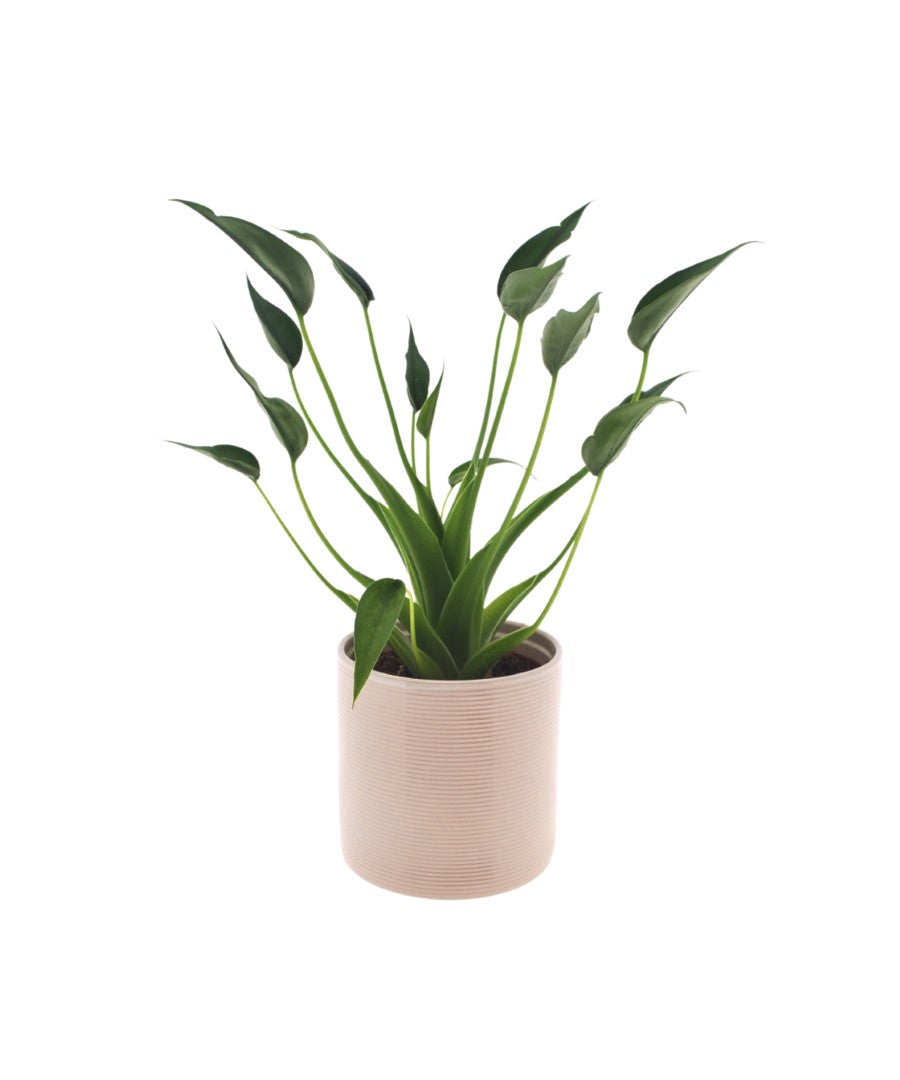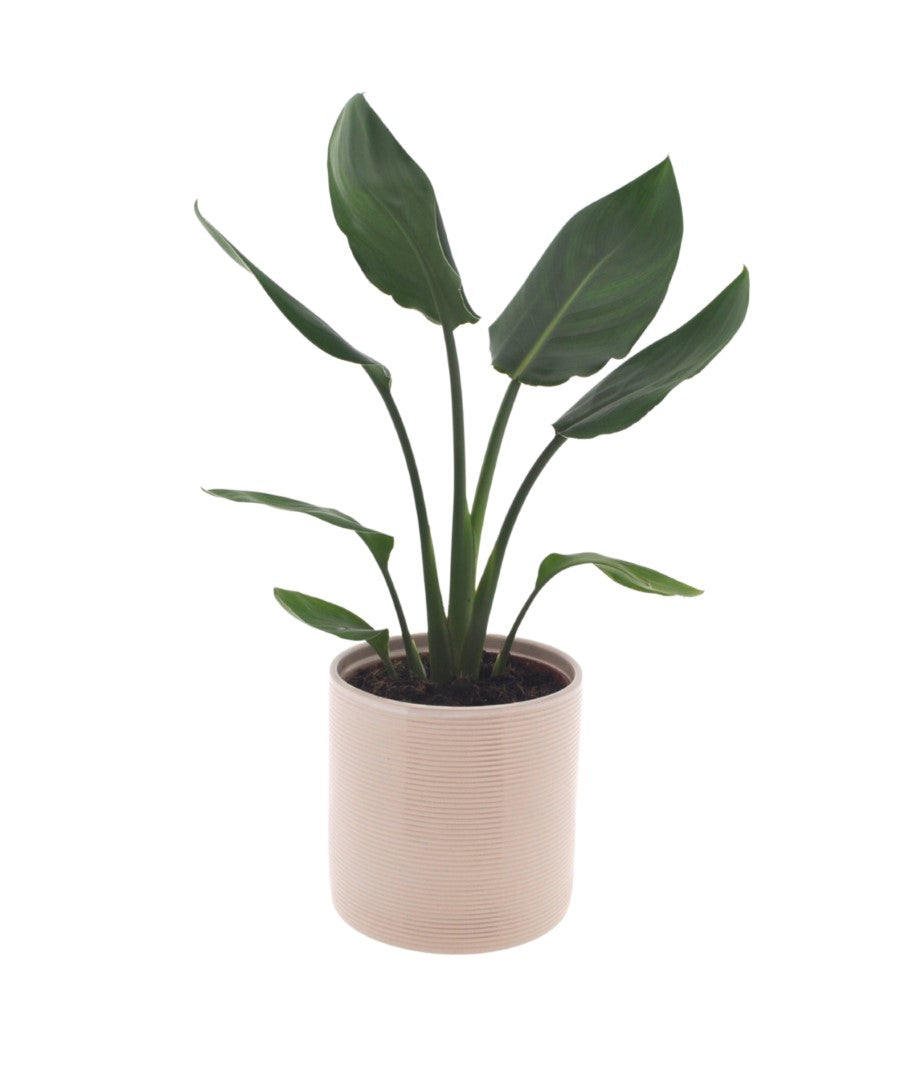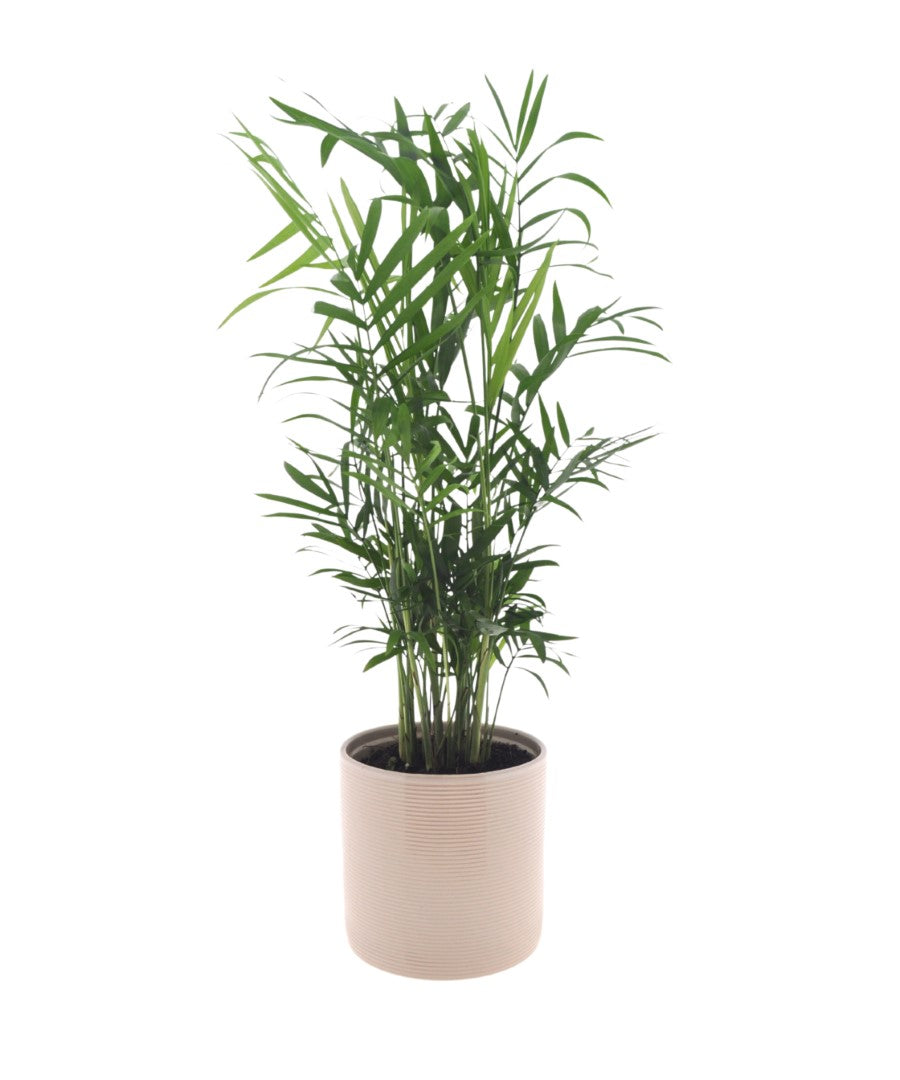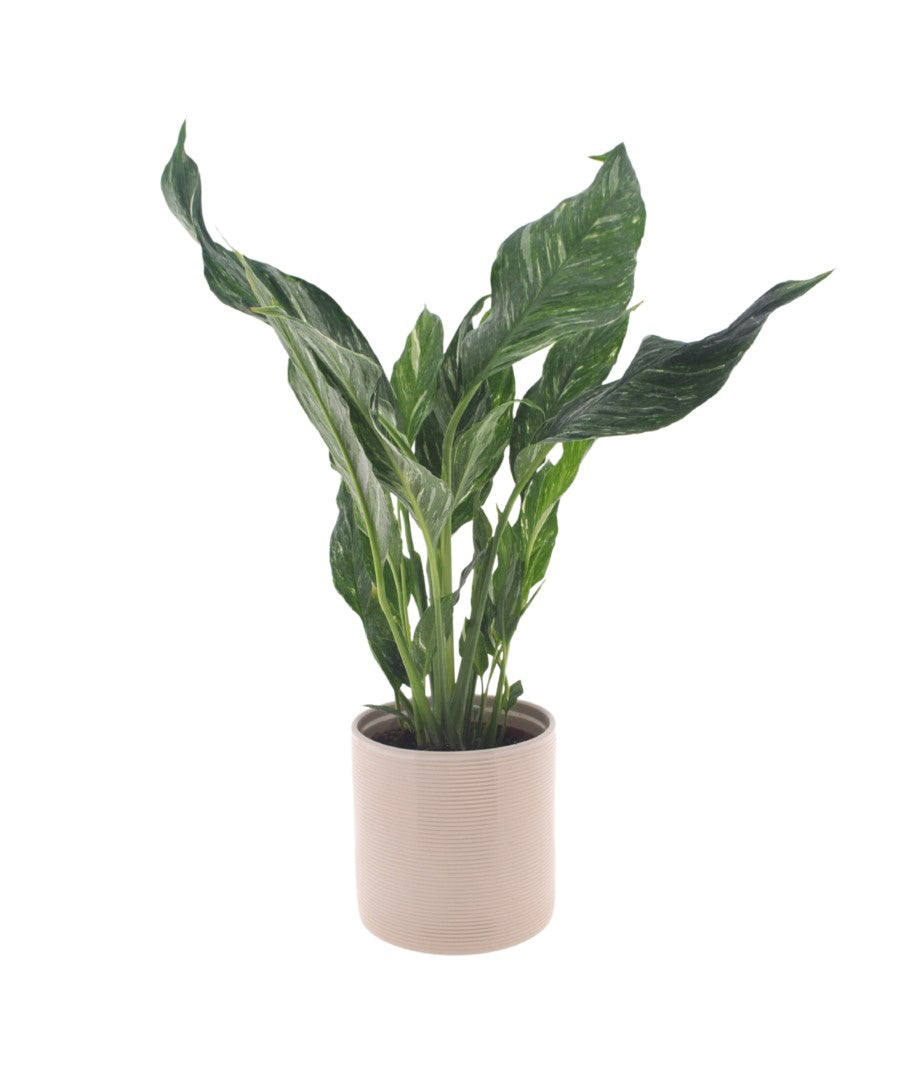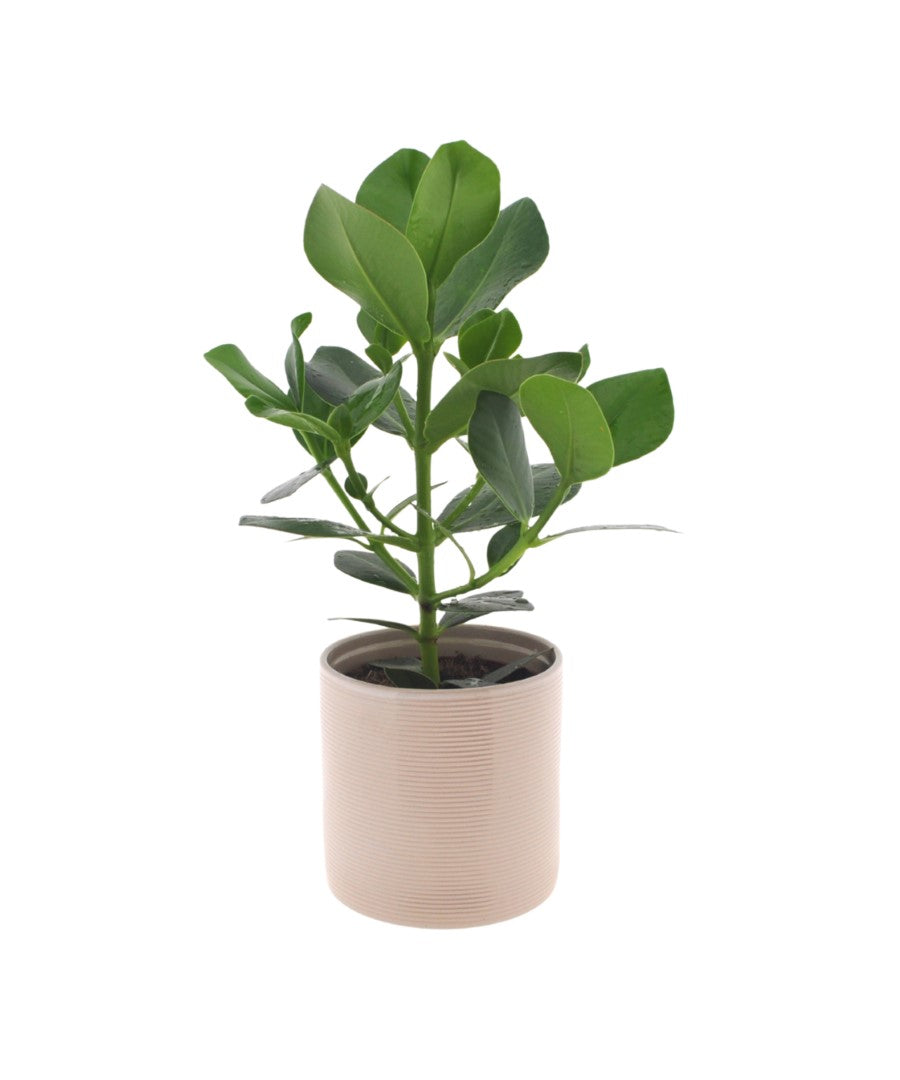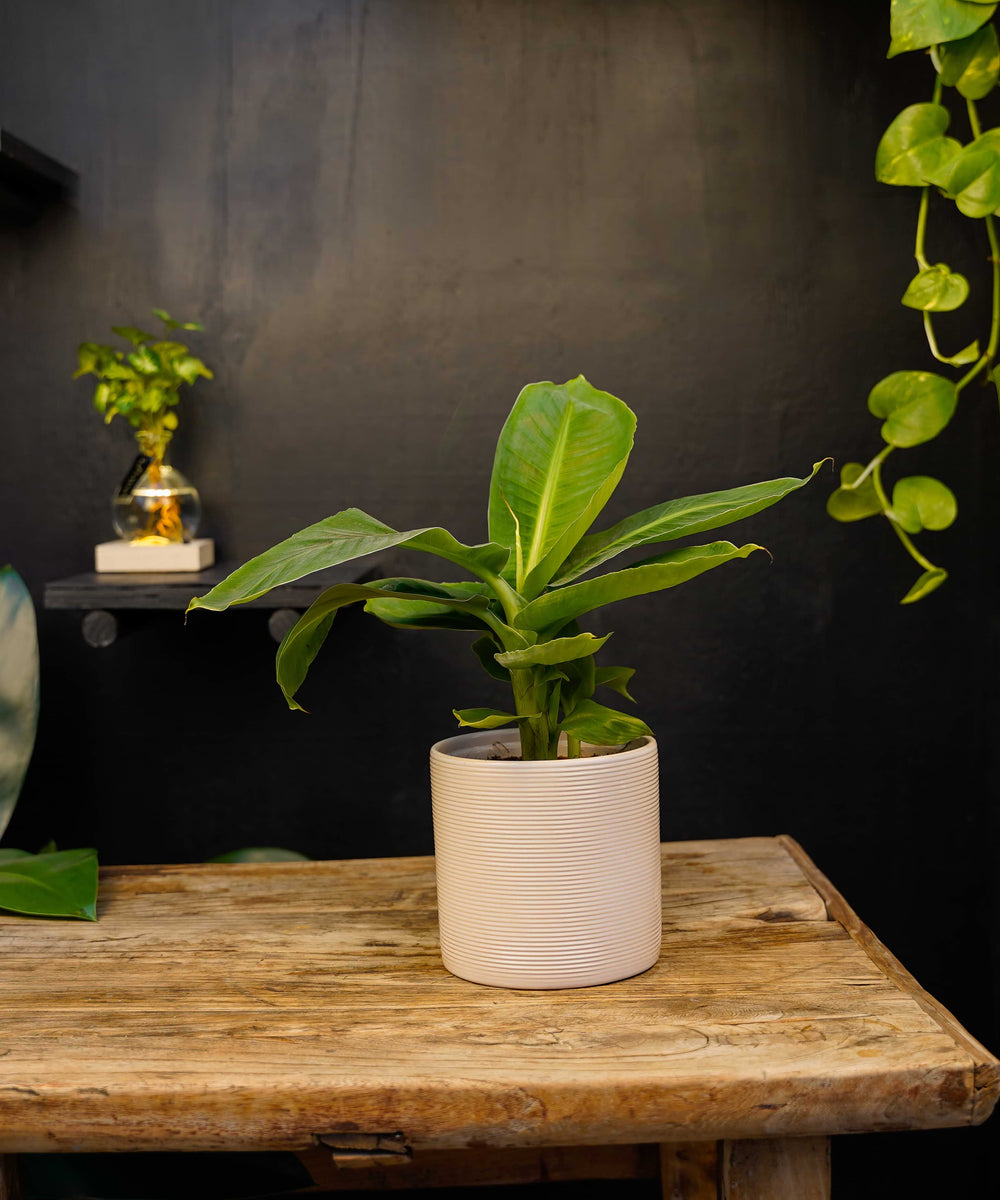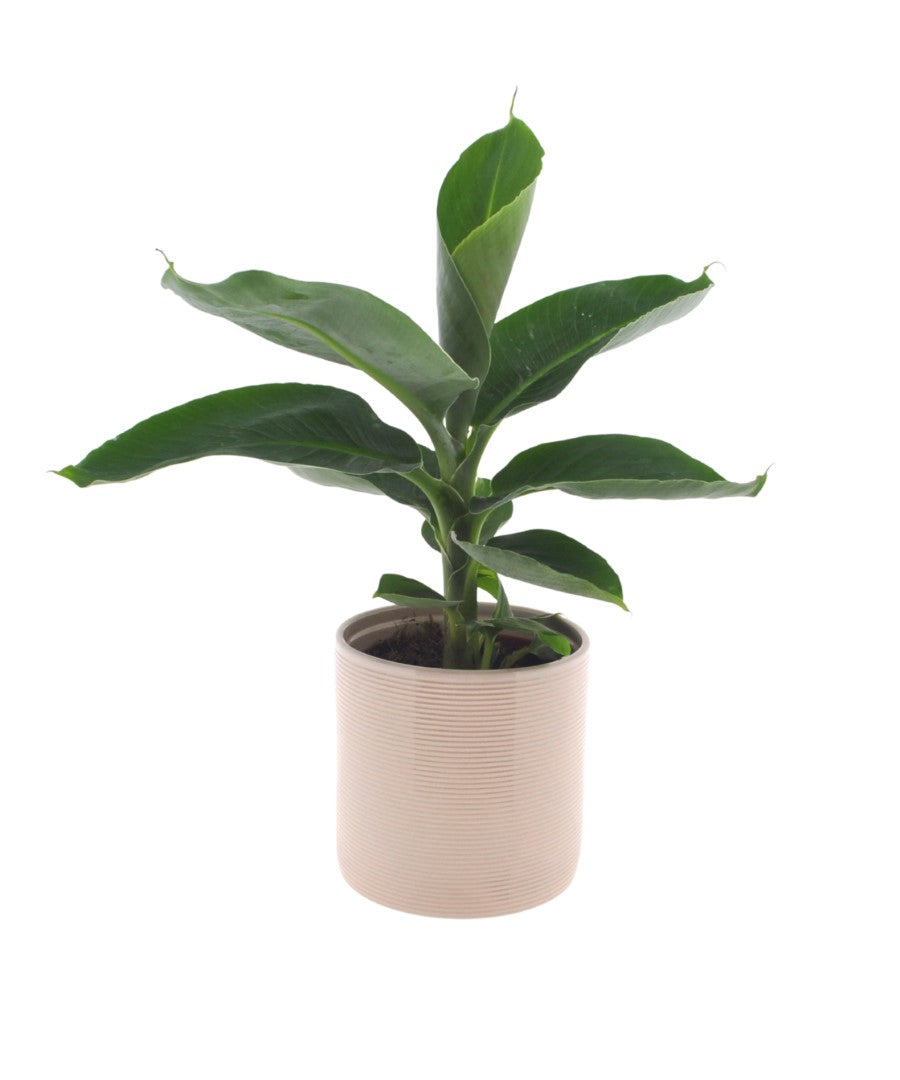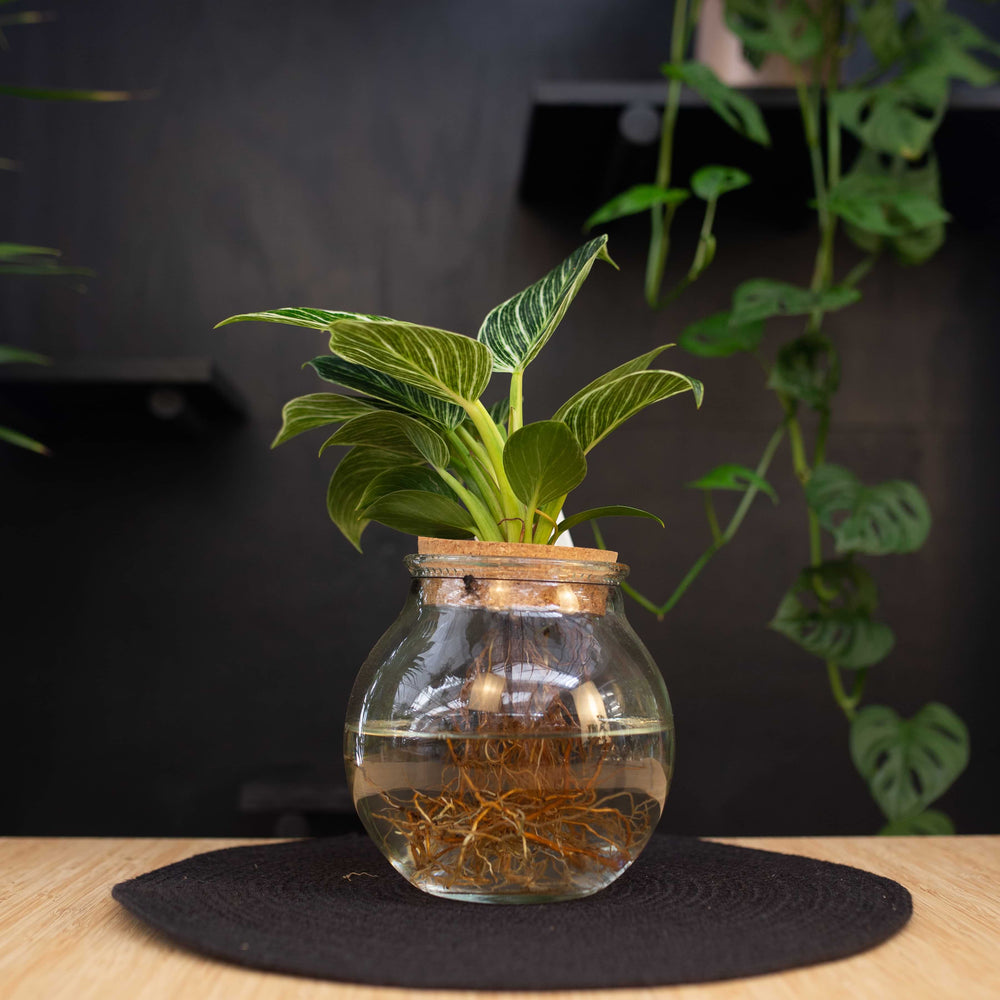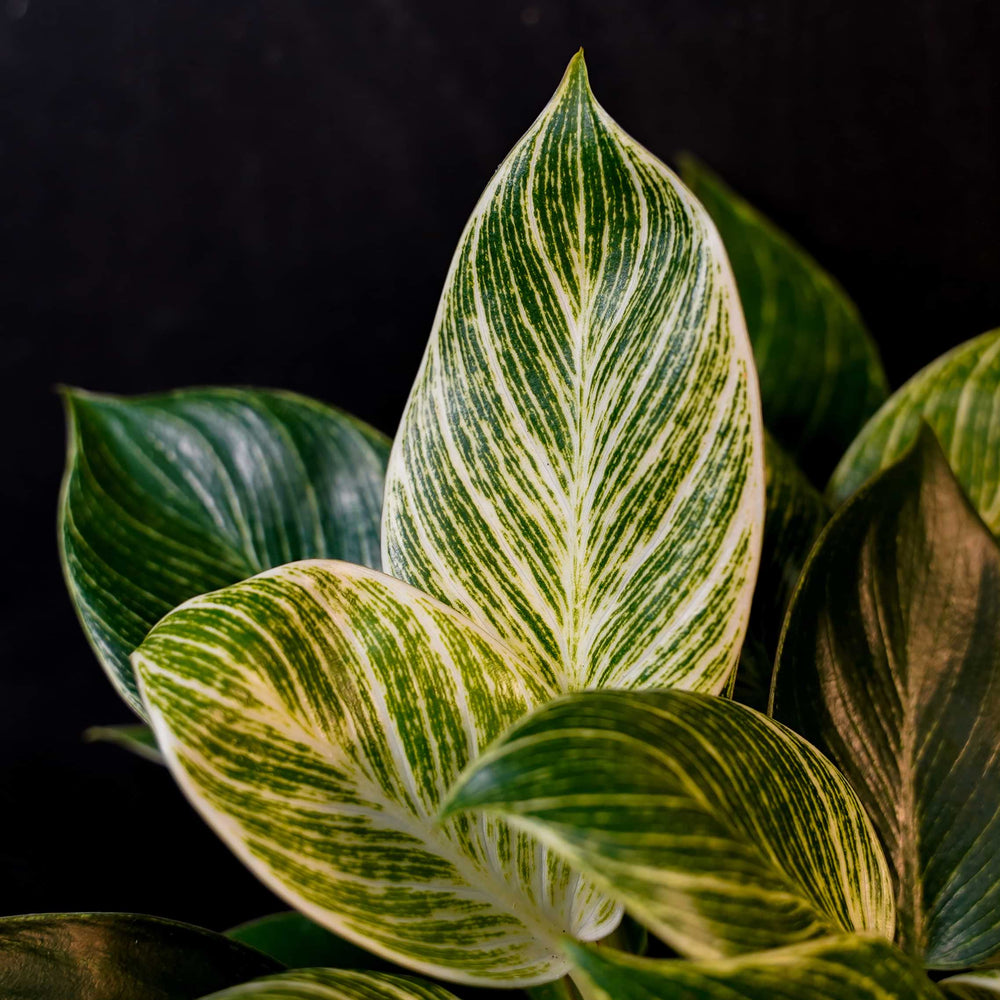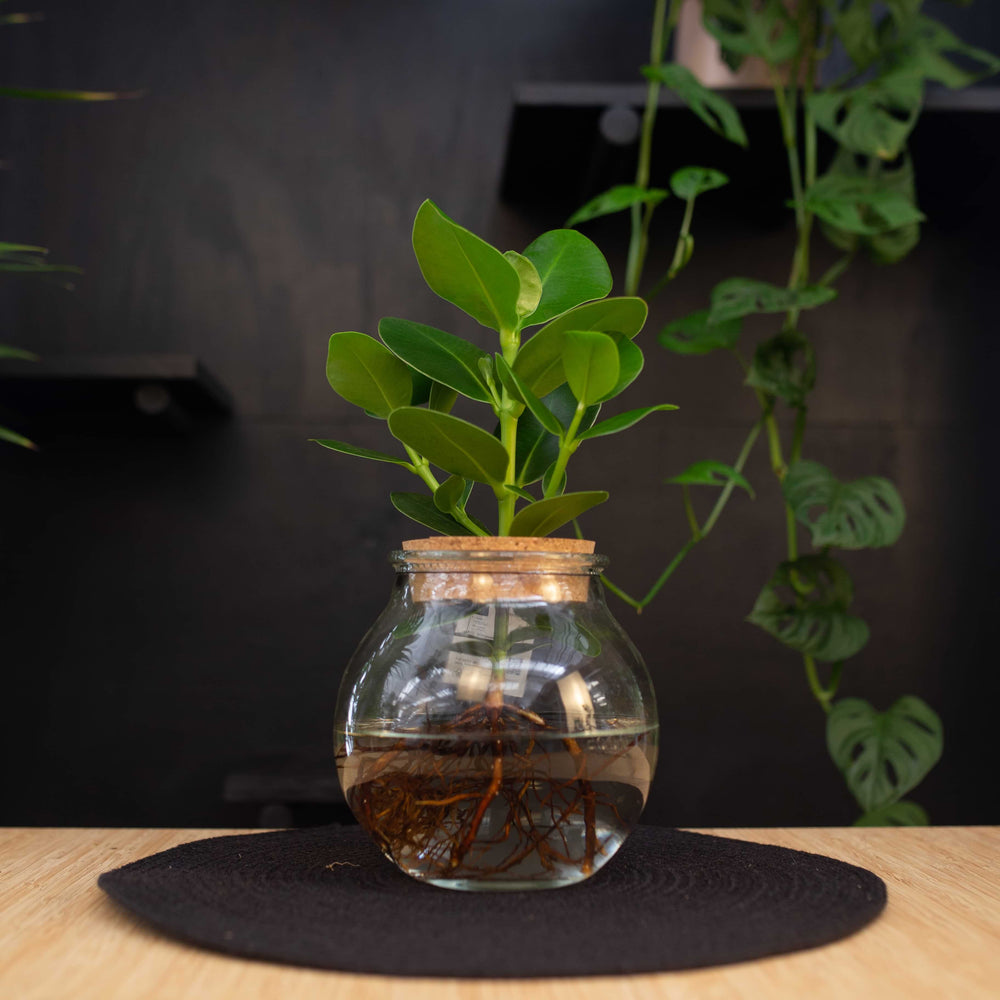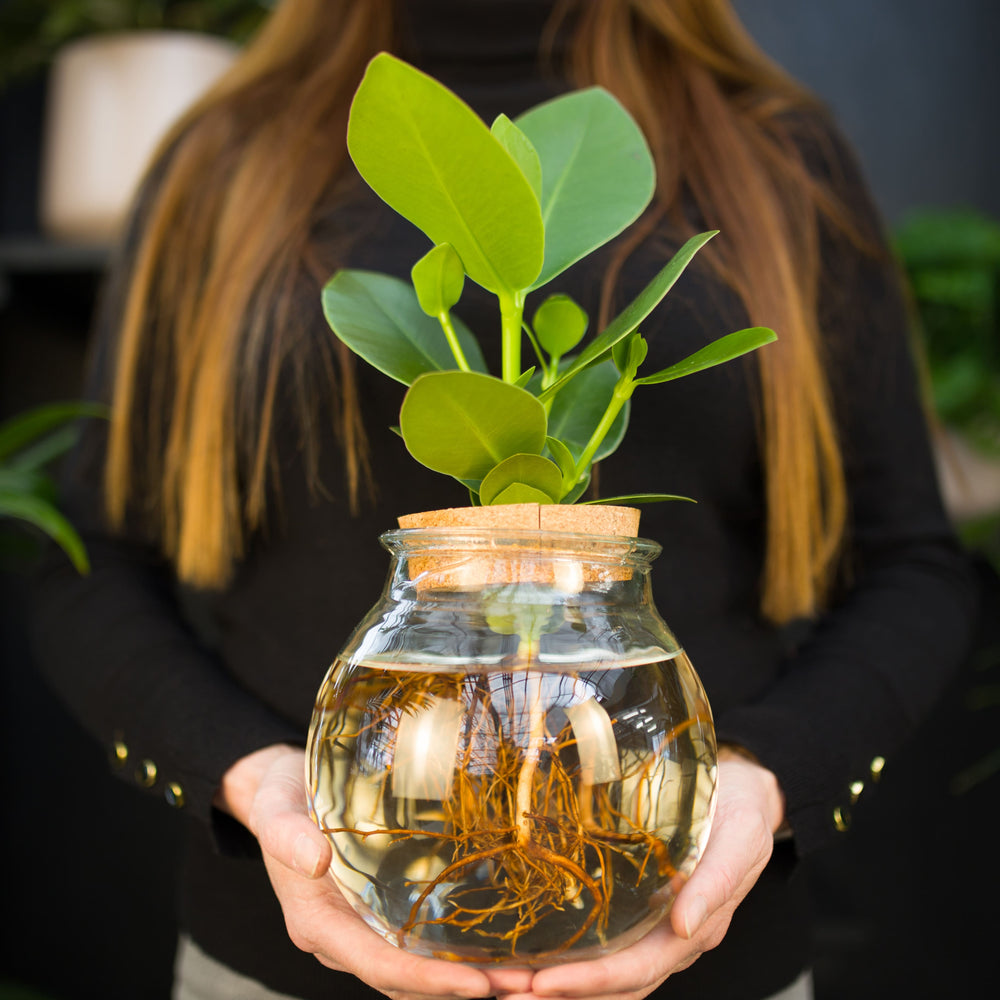Ontdek onze Alocasia plant en meer
Alles wat je wilt weten over de verzorging van je Alocasia plant
De Alocasia is een exotische plant die direct de aandacht trekt met haar opvallende bladeren en elegante uitstraling. Er zijn meer dan 70 verschillende soorten Alocasia's om uit te kiezen. Voor elk interieur is er wel een geschikte variant te vinden.
Deze tropische schoonheid komt oorspronkelijk uit Azië en behoort tot de familie van de Araceae. Sommige soorten hebben zulke grote bladeren dat ze daar gebruikt worden om onder te schuilen tijdens een tropische regenbui.
Een Alocasia Tiny Dancer heeft luchtzuiverende eigenschappen. Ze produceert zuurstof en filtert schadelijke stoffen uit de lucht. Hierdoor kan deze opvallende plant de luchtkwaliteit in huis verbeteren.
Overweeg je om een Alocasia te kopen voor je interieur, lees in deze verzorgingspagina waarom juist een Alocasia de perfecte plant is.
Een Alocasia Tiny Dancer is een sterke, makkelijk te verzorgen plant, dus ook als je geen groene vingers hebt een prima plant om aan jouw interieur toe te voegen.
Er zijn enkele factoren om rekening mee te houden bij het plaatsen van een Alocasia kamerplant in jouw leefomgeving.
Deze prachtige plant gedijt het beste op een plek met helder, indirect licht.
Zorg ervoor dat je de Alocasia niet direct blootstelt aan felle zonnestralen. Direct zonlicht kan de bladeren verbranden en verkleuring veroorzaken.
Plaats je plant in de buurt van een raam op het oosten of westen. Daar kunnen ze genieten van het zachte ochtend- of avondlicht.
Een goede watergift is essentieel voor de gezondheid van je Alocasia. Hier zijn enkele belangrijke punten om in gedachten te houden:
Zorg voor een licht vochtige grond. Het is belangrijk om de grond waarin je Alocasia groeit, licht vochtig te houden. Overmatig water geven leidt tot wortelrot. Te weinig water resulteert in droge en slappe bladeren. Zoek naar een balans waarbij de grond vochtig aanvoelt, maar niet drassig.
Pas de watergift aan op basis van de omstandigheden. Normaal gesproken geef je een Alocasia één keer per week water. Afhankelijk van de temperatuur, luchtvochtigheid en de grootte van de pot kan je dat aanpassen.
Controleer regelmatig de bovenste laag van de grond en geef water als deze droog aanvoelt. In de zomermaanden kan het nodig zijn om vaker water te geven dan in de winter. Pas echter op voor overbewatering, want dat kan schadelijk zijn voor de olifantsoor.
De Alocasia voelt zich het meest comfortabel bij een gemiddelde kamertemperatuur tussen de 18°C en 22°C. Het is belangrijk om grote temperatuurschommelingen te vermijden, aangezien deze de groei van de plant kunnen belemmeren.
Deze exotische schoonheid houdt ook van een vochtige omgeving. Besproei de bladeren regelmatig met lauw water om de luchtvochtigheid te verhogen.
Een andere handige tip is om de olifantsoor op een schaal met water en stenen of kiezels te plaatsen. Terwijl het water verdampt, creëert het een natuurlijke luchtvochtigheid rondom de plant.
Verpotten is een belangrijke stap in de verzorging van planten, want na verloop van tijd kan jouw Alocasia plant behoefte hebben aan een grotere pot met verse potgrond.
Doe dit als je ziet dat er veel wortels in de pot zitten, of als je de plant al een tijd in je interieur hebt staan. Hier zijn enkele tips:
Kies de juiste potmaat. Kies een pot die ongeveer 20% groter is dan de huidige pot. Dit geeft de wortels voldoende ruimte om te groeien. Zorg ervoor dat de pot afvoergaten heeft om overtollig water af te voeren.
Gebruik geschikte potgrond. Gebruik een goed doorlatende potgrond die rijk is aan organisch materiaal. Dit zorgt voor een goede luchtstroom rond de wortels en helpt bij het vasthouden van vocht. Vermijd zware en compacte grondsoorten die water vasthouden.
Verpot in het voorjaar: Het voorjaar is het ideale moment om je Alocasia te verpotten. Tijdens deze periode begint de plant actief te groeien en herstelt ze beter van de stress. Zorg ervoor dat de plant goed bewaterd is voordat je begint met verpotten.
Het vermeerderen van de Alocasia kan worden gedaan als er naast de hoofdstengel een nieuwe plant groeit.
Haal de stek voorzichtig los van de hoofd plant. Let erop dat de stek een aantal (eigen) wortels heeft.
Plaats de stek in vochtige potgrond, houd de grond ook steeds licht vochtig.
Zorg ervoor dat de stek voldoende warmte en licht krijgt.
Na verloop van tijd groeien er nieuwe wortels en bladeren aan de stek.
Slappe bladeren bij de Alocasia betekent te veel of te weinig water. Controleer de vochtigheid van de grond en pas de watergift aan. Zorg ervoor dat je de plant niet in de volle zon plaatst. Dit leidt namelijk ook tot verslapping van de bladeren.
Verkleurde bladeren kunnen verschillende oorzaken hebben. Als de bladeren geel worden, kan dit duiden op overbewatering of gebrek aan voedingsstoffen. Bij bruine bladeren kan direct zonlicht op het blad of lage luchtvochtigheid een rol spelen. Pas de verzorging aan om deze problemen op te lossen.
Er zijn verschillende prachtige Alocasia soorten. Sommige zijn groot, sommige zijn klein, maar elk met hun eigen unieke kenmerken. Hier zijn enkele populaire varianten:
Alocasia Tiny Dancer, zij staat bekend om haar unieke bladvorm: een lange stengel met een klein blad aan het uiteinde, waardoor ze een trendy en eigentijdse uitstraling heeft.
Alocasia Macrorrhiza of olifantsoor is een spectaculaire tropische verschijning door haar grote bladeren. Een echte blikvanger!
Alocasia Polly is met haar opvallende groene bladeren en witte aderen een opvallende plant in elk interieur.
Alocasia Amazonica staat bekend om haar donkergroene bladeren met zilverachtige nerven, deze creëren een prachtig contrast.
Alocasia Zebrina heeft unieke zebra-achtige strepen op haar bladeren wat een exotisch tintje geeft aan haar omgeving.
Het gebruiken van de juiste voeding is van groot belang voor de gezondheid van je kamerplant. Hier zijn enkele belangrijke punten over voeding:
Gebruik een vloeibare kamerplantenmest die speciaal is samengesteld voor bladplanten. Deze meststoffen bevatten de juiste verhouding van voedingsstoffen die je olifantsoor nodig heeft om gezond te blijven.
Lees altijd de instructies op de verpakking van de meststof en volg de aanbevolen dosering en frequentie. Overbemesting kan schadelijk zijn voor de wortels van je plant. Wees dus voorzichtig en houd je aan de voorgeschreven hoeveelheden.
Geef je Alocasia voeding tijdens het groeiseizoen. Dat is meestal in de lente en zomer. Eenmaal per maand is voldoende. Stop met voeden tijdens de rustperiode van de plant, in de herfst en winter.
